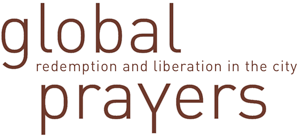Macet is the Indonesian word for a logjam, but it could also be taken as a synonym for Jakarta—since the Indonesian capital’s congestion has long since attained world notoriety. Yet slow-moving traffic is not merely confined to the Jalan Sudirman, Jakarta’s main thoroughfare, which runs straight through the inner city and is flanked by gigantic skyscrapers and glittering malls. Sometime the entire city seems to be just one tailback. Hence it is no surprise that street vendors, service providers, and more recently the followers of religious groups, exploit this tear in the urban fabric and resort to all manner of ruses to vie for the attention of the mass public in this metallic tailback. Particularly for the moped-driving male members of the Sufi organization Tariqa Alawiya, the logjams cluttering Jakarta’s main roads have become communications platforms on which either to advertise their gatherings or actually stage them in the immediate vicinity.
Founded in the fourth century as a settlement and port of the Hindu kingdom on the west of the island of Java, Jakarta is South East Asia’s biggest city and capital of the world’s most populous Muslim country, boasting some 10 million residents. Catholics and Protestants account for ten percent of the Indonesian population. By virtue of its port, Jakarta has become a vast commercial hub, through which local, national, and global trade, transport, and capital flows. In 1619 the Dutch were seeking a secure base for the East India Company. Jan Pieterszoon Coen, the Governor General, ordered ancient Jakarta to be burned to the ground and on its ruins he erected the city of Batavia, with its magnificent government buildings and overseas branches of the world’s leading trading houses. In the seventeenth century, Batavia was a key strategic trading center between the Indian Ocean and the South China Sea. With the opening of the Suez Canal toward the end of the nineteenth century, Batavia’s importance as an international port city grew, as did the influence of Islam in Indonesia. The number of migrants from the Hadramaut (Yemen), who had begun settling in Batavia at the end of the eighteenth century, also increased. Whereas the city center was inhabited by Europeans, Hadramis, and Chinese, the indigenous Indonesian population, the Betawi, was confined to the poorer quarters beyond the city walls. Dutch colonial rule endured for over 300 years and only ended in 1942.
As was the case in many former colonial cities, the shifting structure of global trade fueled a dramatic rise in the population of Jakarta. Particularly during the post-1950 phase of rapid acceleration, the attendant urbanization during the twentieth century generally took place without any planning. Not until the late 1960s was a master plan adopted under the then-governor of Jakarta Ali Sadikin, which focused on expanding the infrastructure in the center and south of the city and on developing Jakarta into a trading metropolis to rival neighboring Singapore. In the wake of the oil boom of the 1980s, Indonesia’s capital underwent a profound socioeconomic transformation. In office since 1967, President General Mohammed Suharto focused during his first decade in office on steering his country— sometimes with the use of force—onto a pro-Western course. The Communist Party of Indonesia, which during the 1960s had more members than its Soviet counterpart, was banned, its supporters persecuted and arrested, some tortured and murdered. The military,on whose backing Suharto was reliant, began to engage in close cooperation with the United States. Suharto opened the country to foreign investors who initially came from the West and subsequently from the country’s Asiatic neighbors. Jakarta became the region’s showcase for progress and national prosperity.
Indonesia’s seemingly inexorable economic rise during the 1980s was overshadowed by a massacre which took place in Jakarta’s Tanjung Priok dockland area. In 1984 soldiers opened fire on a group of Muslim demonstrators who were refusing to renounce their religious beliefs in favor of the Indonesian state ideology “Pancasila.” Introduced upon Indonesia’s Independence, Pancasila served to suppress dissident left- and right-wing movements. The incident in Tanjung Priok, which claimed many lives, was only investigated after Suharto’s overthrow in 1998.
Blighted by weak leadership, the post-Suharto era saw a plethora of extremist groups spawn like mushrooms, and one lethal terror organization, known as “Jemaah Islamiah” managed to gain a firm foothold in Indonesia. Despite this, however, Islam in Indonesia is characterized by a paradoxical blend of religiosity and secularism, and the country portrays itself as cosmopolitan and liberal. At the 2009 elections, the majority of Indonesians voted against the Islamist parties and elected State President Susilo Bambang Yudhoyono into a second term of office, with over sixty percent of the votes. Nevertheless, religious toleration is limited: Indonesians are required to choose only between the country’s six recognized religions on their passports; atheism is illegal, and attacks against religious minorities such as Christians, Buddhists, and the Ahmadis who are regarded as Muslim dissenters, have occurred more frequently in recent years. On a local level, Indonesia is plagued by endemic
corruption, poverty, and government incompetence, to the extent that many Muslims are seeking a solution to their problems in their religion. In Jakarta, the protests against largescale urban development projects have been initiated and sustained by religious movements. For example, construction work on two projects in the Tanjung Priok area and in downtown Jakarta had to be halted after the graves of Muslim saints were discovered there.
This provoked violent clashes between Muslims and the police.

